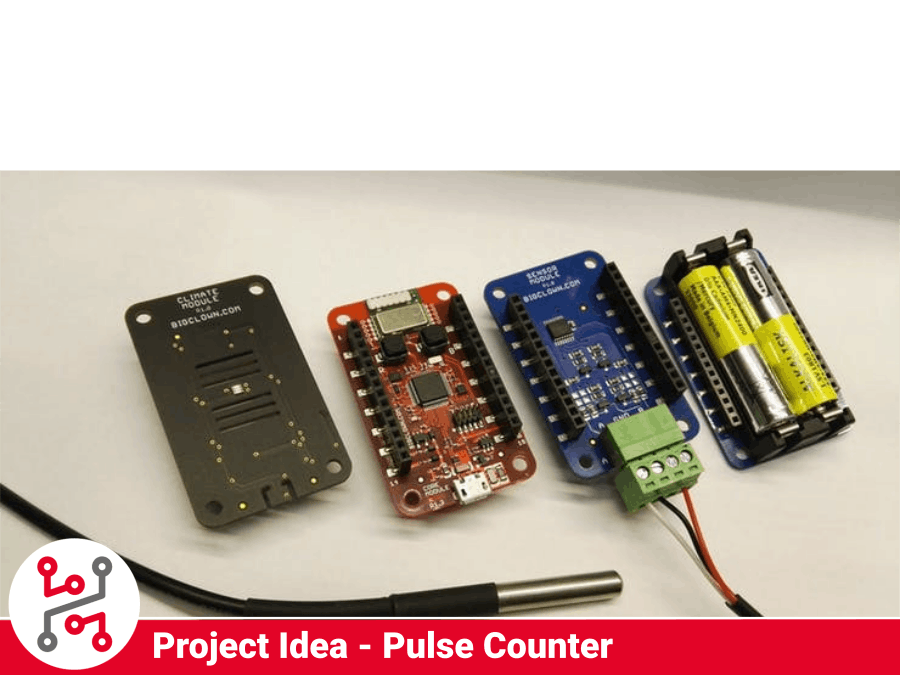This project shows a demo on how to use HARDWARIO IoT Kit with some sensor that sends pulses every time some action occurs.
It can be the opening of a door, it can be liters of water that you and your family used in your house. Any action can be recorded.
This project can be used in situations where you want to be notified every few minutes/days/liters/.....
If you want to get a notification every time the action happens you can update the code so it sends it every time.
1. Build hardwareYou will need the Mini Battery Module,Sensor Module so you can connect your external sensor that will send the pulses. and also a Core Module.
It runs on batteries, you can use Mini or Standard version of the battery module.
Connect your sensor into the Sensor Module, it should have two cables running out of it.
One cable will run out of the Channel A on a Sensor Module, the second one will be in Channel B. This way it will work basically like a virtual button. You can see how to do it on the image below.
- Download HARDWARIO Playground,
- Flash firmware to the Core Module that was made for this project. You will find in the Playground by name: bcf-radio-pulse-counter
- How to flash firmware is shown in the documentation.
You need to pair the Core module with the Radio dongle that you are using, follow the instructions below to see how it is done.
- Connect your USB Radio Dongle to your computer.
- Open HARDWARIO Playground
- Click Start Pairing the LED on the dongle should start blinking
- Connect the device that you want to pair into your computer or insert the batteries.
- Wait for the device to appear in the table
- It should add the device with the Alias: wireless-pulse-counter:0
- After you did all this you can unplug the device from the computer and insert the batteries. The next steps will be done on the computer, so you can leave the device and focus on the NODE-Red.
Open Node-RED in the Playground or Raspberry Pi and import this flow from the Attachments in the Menu -> Import -> Clipboard.
Do not forget to hit "Deploy" in the top right corner to apply the changes.
This flows sends the pulse number into the dashboard and shows it as a plain number and also in the graph that shows pulses in time so you can see how many actions occurred in the last hour or so.
Also, there is an example on how to send notifications if you cross some number of pulses.
You can also do some integrations with other applications like Blynk or Grafana.
5. Test your devicePlace your device and sensor where they should be and you can then artificially make the action happen or just wait for it, after a few minutes you will get the first message about the number of pulses.
You can connect multiple sensors across your house or office building and you will be able to make some statistics out of these data.
Maybe you will find out that you can save some money if you take some precautions.
Feel free to ask any questions about this project.
- Visit HARDWARIO page on hackster.io for more interesting projects or go directly to their website
- Go to HARDWARIO documentation to learn more about their modules and other possibilities of the platform.
- Try more firmware from HARDWARIO Playground or write your own, it is easy to start.
- Because everything is Open source you can get all firmware on GitHub, get some inspiration and try to make your own applications.
- Get your own HARDWARIO Hub to replace your computer in this project so you have always access to your applications.
- Check out more applications that can be used with HARDWARIO IoT Kit in Integrations section.
















Comments
Please log in or sign up to comment.